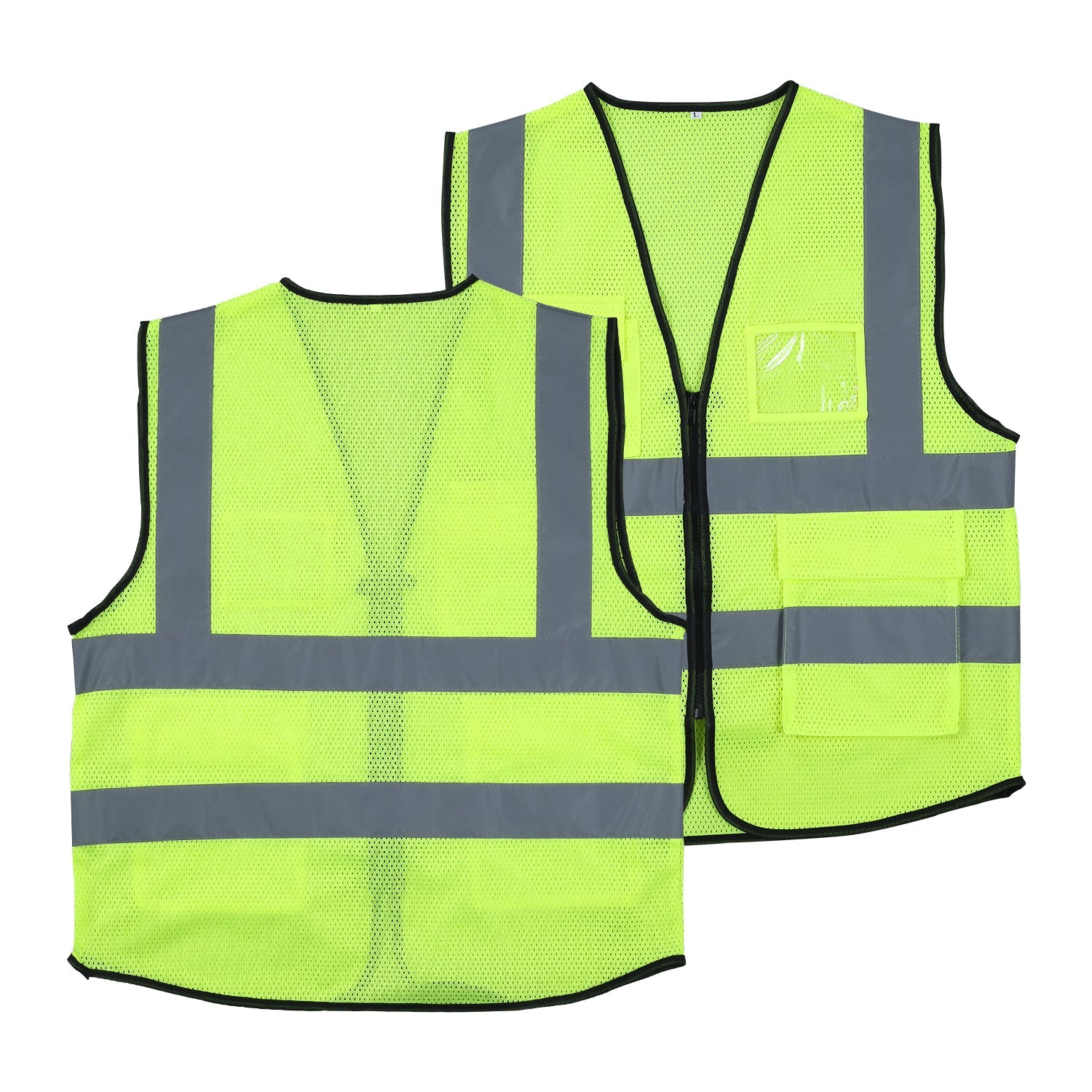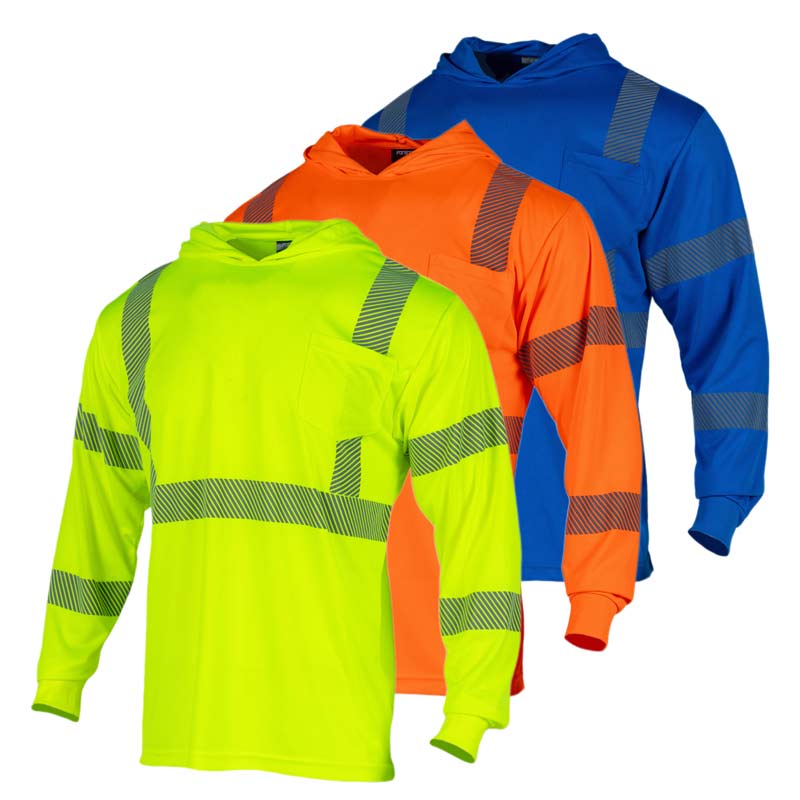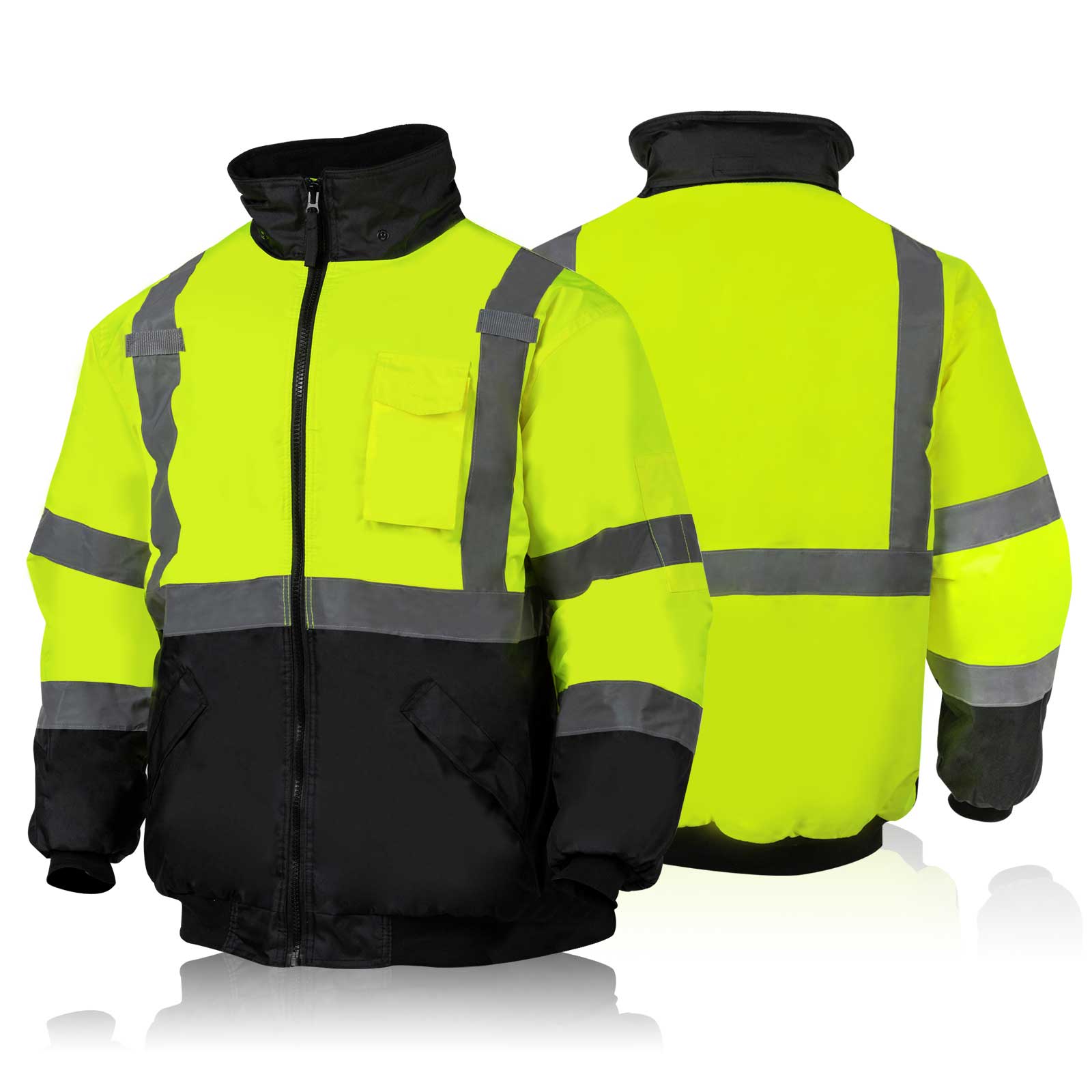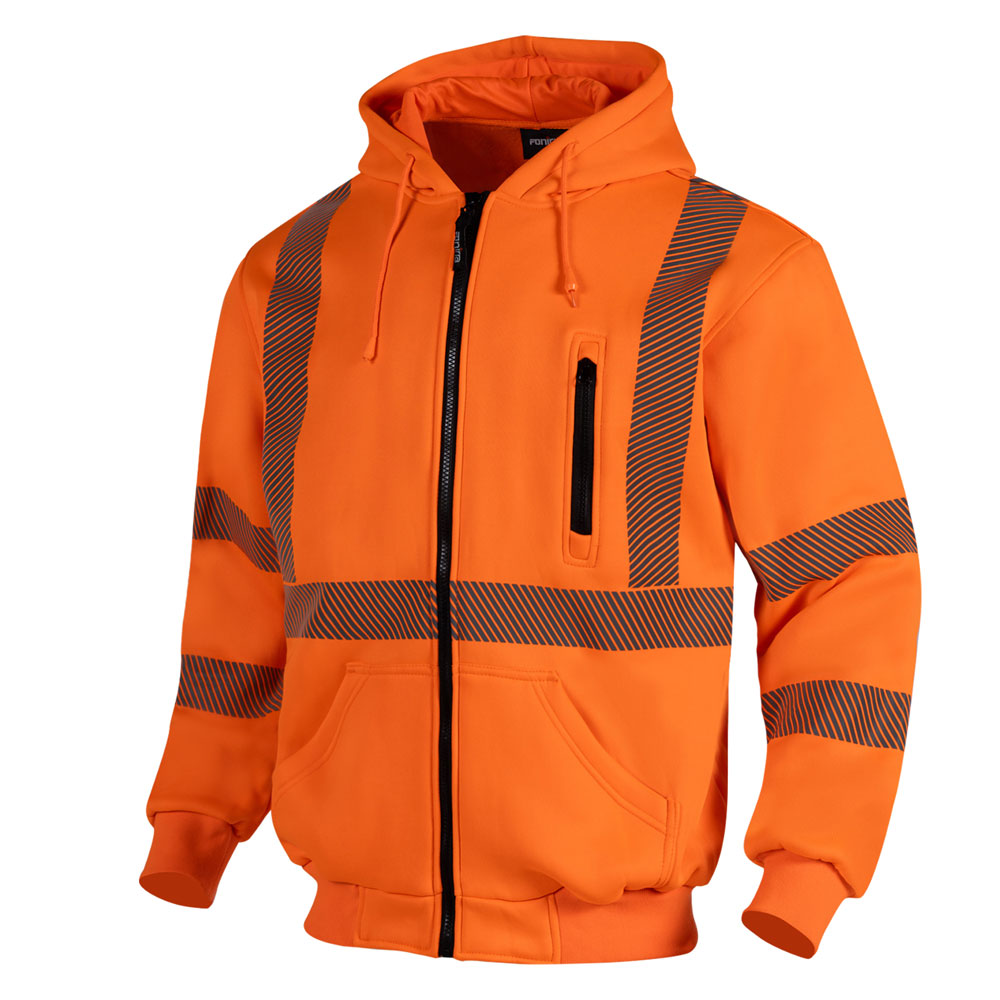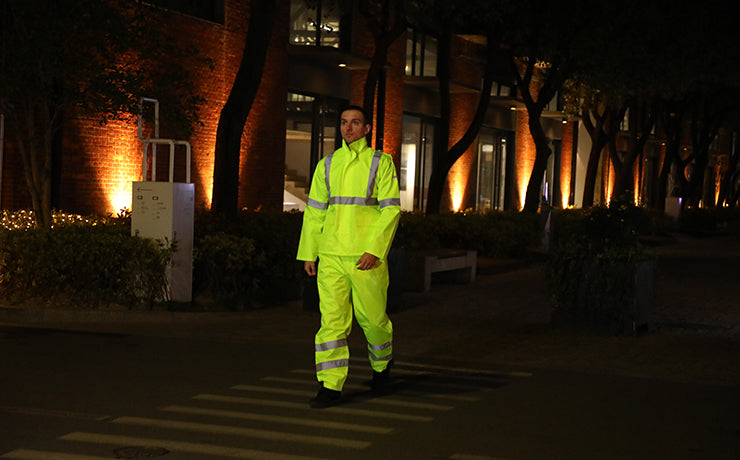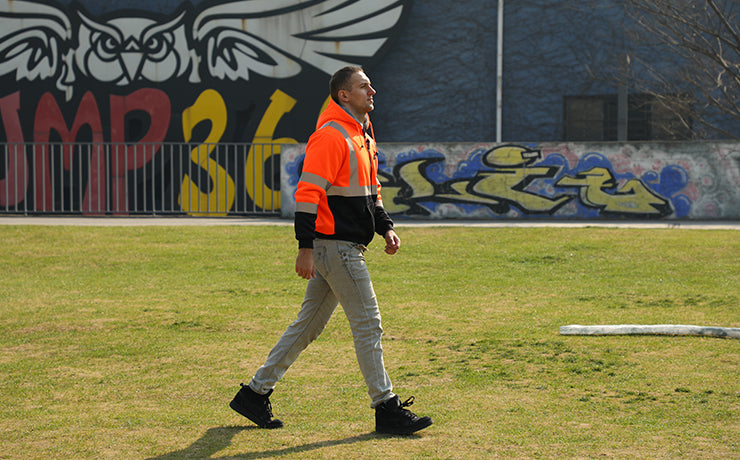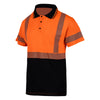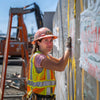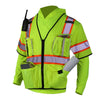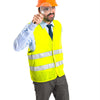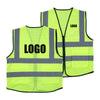Safety Training: Incorporating High Visibility Workwear into Your Construction Safety Program
In the construction industry, where every day brings new challenges and hazards, prioritizing the safety of your workers is paramount. A key component of this commitment to safety is the integration of high visibility workwear into your safety and health training programs.
This crucial measure ensures that everyone on-site is easily seen, significantly reducing the risk of accidents. By aligning with OSHA 40 construction standards, incorporating high visibility gear not only bolsters construction site safety but also demonstrates a profound investment in the well-being and efficiency of your workforce.
What are Construction Safety Programs?
A construction safety program is like a game plan for keeping everyone safe on the job. Think of it as a set of rules and strategies to avoid accidents, from wearing the right gear to knowing what to do if something dangerous happens. It's all about making sure everyone goes home safe at the end of the day.
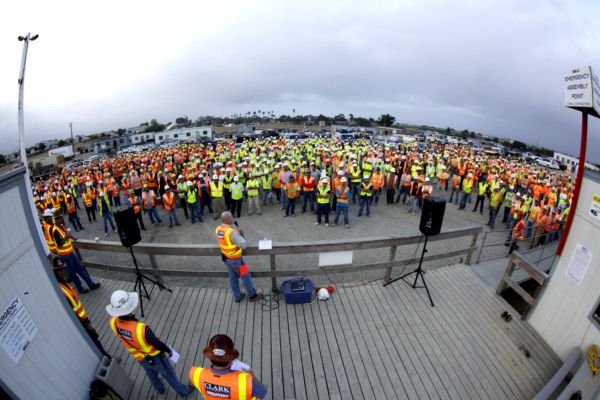
source: Safety Toolbox Topics
Significance of Construction Safety Programs
-
Preventing Accidents: Just like a helmet in football, safety programs help prevent injuries on the construction site. By teaching workers how to avoid hazards, we can make accidents rare.
-
Ensuring Compliance: There are lots of rules about construction safety. A good safety program makes sure that the company and its workers follow these rules, avoiding fines and keeping the site running smoothly.
-
Creating a Safety Culture: Safety programs help build an environment where everyone thinks about safety first. This means workers look out for each other, making the site a safer place for everyone.
How High Visibility Workwear Fits into the Construction Safety Plan?
High visibility workwear is a key player in the safety program. It's like putting on a bright light in a dark room, making sure workers stand out against the background. This is especially important when there are vehicles moving around. Simply put, when you're easy to see, it's easier to avoid accidents.
The Role of High Visibility Workwear
High visibility workwear is clothing made to make workers stand out. It's usually in bright neon colors with reflective strips. There are a few types:
-
Vests: Lightweight and easy to wear over other clothes.
-
Jackets and Coats: Good for cold weather, keeping workers warm and visible.
-
Raincoat: Keep workers dry while making them more visible.
Standards and Regulations
There's a rulebook for high visibility wear called the ANSI/ISEA 107 standard. It tells manufacturers how to make these clothes so they really catch your eye. This standard ensures that the gear meets safety requirements, keeping workers safe.
The Science Behind High Visibility
The reason high visibility workwear is so effective is pretty cool. The bright colors are easy to see during the day, and the reflective strips light up at night when light hits them. This combination makes sure workers are visible in all kinds of lighting conditions, reducing the risk of accidents.
Incorporating High Visibility Workwear into Your Program
Ensuring the safety of construction workers is paramount, and incorporating high visibility workwear into your construction company safety program is a key step. This gear is crucial for enhancing visibility and significantly reducing the risk of accidents on construction sites.

Here are the steps to Assess the Need for High Visibility Workwear on Construction Sites:
1. Hazard Identification
Start by identifying potential hazards that workers face on the job site. This includes assessing the risk of being struck by vehicles, machinery, or falling objects. Hazard identification is a fundamental part of OSHA standards and is essential for construction site safety.
2. Job Site Analysis
Evaluate the specific conditions of the job site. Look at factors such as lighting, the movement of heavy equipment, and the pace of work. Site-specific safety plans should consider these factors to determine the need for high visibility workwear.
3. Worker Input
Engage with construction professionals and certified safety professionals to get their insights on visibility issues and potential hazards. Their firsthand experience is invaluable in developing a comprehensive safety program.
4. Review of Accident and Injury Reports
Analyze past incidents to understand if poor visibility played a role. This review can help tailor the high visibility workwear program to prevent similar occurrences.
5. Compliance with OSHA 40 Construction and Other Regulations
Ensure that the program meets or exceeds OSHA standards and industry practices for high visibility workwear. This includes understanding the OSHA Act and ensuring that all personal protective equipment (PPE) used on the site complies with these health and safety standards.
Since 2020, the New York City policy holds a law that requires workers assigned to job sites mandating a Site Safety Plan, including those requiring a designated Construction Superintendent, Site Safety Coordinator, or Site Safety Manager, must undergo 40 hours of training.
Construction Safety Meeting Topics
Effective construction safety training encompasses a wide range of topics to ensure worker safety and health. Here are several key areas that should be covered in construction safety meetings:
-
Use and Maintenance of High Visibility Workwear: Educate workers on the importance of wearing high visibility gear, how to maintain it, and the standards it should meet (e.g., ANSI/ISEA 107).
-
Fall Protection: Discuss strategies and equipment for preventing falls, one of the most common hazards on construction sites. This includes training on specific equipment and the role of a competent person in ensuring safety.
-
Electrical Hazards: Address how to identify and avoid electrical hazards, including the proper use of PPE and procedures for working near power lines.
-
Hazardous Materials Handling: Provide training on recognizing and safely handling hazardous materials, emphasizing health hazards and proper protective measures.
-
Confined Space Entry: Review procedures for safe entry into confined spaces, including hazard identification, atmospheric testing, and emergency response plans.
-
Excavation Work: Cover safety practices for excavation work, including understanding soil types, using protective systems, and recognizing excavation-related hazards.
-
Health and Safety Training: Offer comprehensive health and safety training courses that cover OSHA standards, hazard identification, and the development of site-specific safety plans.
-
Employer Responsibilities and Workers' Rights: Discuss the responsibilities of employers in providing a safe working environment and the rights of workers, including the right to refuse unsafe work and the importance of reporting injuries and hazards.
By covering these topics and more in safety meetings, construction companies can foster a culture of safety that prioritizes the health and well-being of their workers.
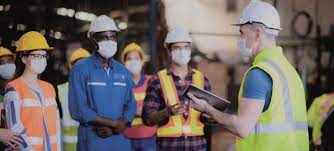
source: eCompliance
Compliance with OSHA 40 Construction and High Visibility Standards
OSHA 40 standards mandate high visibility workwear to ensure worker safety on construction sites. These rules aim to prevent accidents by making everyone visible among the common hazards like machinery, electrical, and fall risks. Compliance isn't just about following laws; it's about actively protecting workers.
Navigating Compliance and Choosing the Right Gear
Compliance requires effective safety training and selecting quality high-vis gear. It's essential for construction teams to use reliable high visibility clothing.
Fonirra's products meet the OSHA 40 standards, offering protection tailored to construction needs. From vests to hoodies, explore our extensive options of hi-vis clothings. Fonirra doesn't just comply with the safety standards, we also prioritize the safety and comfort of workers.
Conclusion
Adopting high visibility workwear is more than just complying with OSHA 40 standards—it's a commitment to the safety and well-being of construction workers. By choosing quality gear from trusted suppliers like Fonirra, construction companies ensure visibility and reduce accidents on site.
This approach not only meets safety regulations but also cultivates a culture of care and vigilance, essential in the hazard-prone construction industry. Investing in proper high visibility workwear is crucial for protecting workers and enhancing project success, making safety a cornerstone of operational efficiency and trust in construction environments.

